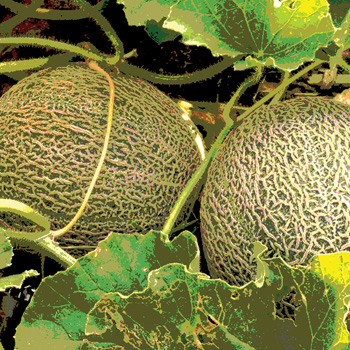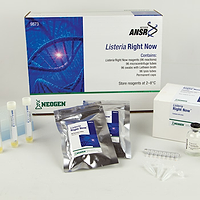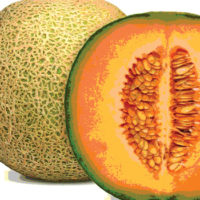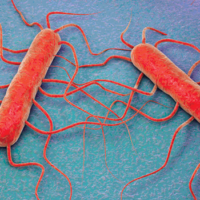Rethinking Listeria: Things Change

“When you can measure what you are speaking about, and express it in numbers, you know something about it; but when you cannot express it in numbers, your knowledge is of a meager or unsatisfactory kind.”
—William Thomson, Lord Kelvin (1824–1907)
These words are as true today as they were over a century and a half ago. As scientists, it is our nature to investigate, measure and improve. Numbers and data are the basis of our informed decision making. Our need for reliable data causes us to examine in detail the workings of our surroundings and learn as we improve. When it comes to Listeria, recent events involving the Listeria outbreak associated with cantaloupe highlight the importance of our work to investigate, measure and improve. An examination of Listeria testing is appropriate, and with new assays coming into the market, now may be the time to completely rethink your past practices and current programs.
Recent events remind us that we should ask ourselves three questions:
1. Is the data that I have sufficient and is it accurate?
2. Do current data represent the reality of my entire food production process and facility?
3. What has changed in my business and how do I quantify the impact of changes?
Things change. Our desire for efficiency and improvement drives change. In the world of food production, changes over decades of “improvement” have resulted in modern food production systems that are very unlike systems of the past. Think about it: How does the scale and efficiency of your facility today compare with 10, 20 or 30 years ago? Small changes can have a significant impact, too. And with these changes, it is important to discuss and investigate the possible unintended effects of change. It is possible that “improvements” to increase production efficiency may also increase the potential for deadly pathogens such as Listeria to invade and find harborage in your facility.
This article will review Listeria testing—new developments that will be introduced to the market in the year ahead and also the fundamentals of selecting a Listeria test for your business. Listeria can be a difficult pathogen to find. Successful food manufacturers make finding Listeria a priority to be able to eliminate it from their facilities. Having the right Listeria test is an important part of the overall process of improvement.
Understanding Listeria
Listeria monocytogenes is one of six Listeria species. Listeria is able to survive for prolonged periods in extreme environments where, once established, it is difficult to eradicate. Listeria is a slow-growing organism, so Listeria tests typically are characterized as taking a long time to provide a result. The efforts of test kit manufacturers have recently resulted in many tests that provide results within 24 hours or less. Additional activities by test kit manufacturers will continue to bring innovation and improvements to the kits available in the marketplace.
A comprehensive Listeria testing program should include both product testing and environmental testing. As food safety professionals, we utilize two types of tests for Listeria:
Listeria spp. testing for environmental samples. Because your goal in testing is finding harborages that are potential sites for Listeria growth, the test method you choose should be broad based and capable of detecting all six strains of Listeria. A method that detects all six Listeria strains will provide the most complete information about your processes and facilities.
L. monocytogenes testing for product samples and direct product contact surfaces. Because of our interest in protecting health, we test product for L. monocytogenes. This is your final opportunity for assurance that systems are working properly and the product manufactured is indeed safe to eat. This part of your overall testing program ensures that product is withheld from commerce until test results for product or product contact surfaces have been received and results are negative
New Listeria Test Methods
As food scientists, we can expect 2012 to bring new, significant developments in sophistication of Listeria testing and microbiological testing generally. Some notable and interesting new technologies are being developed for both Listeria spp. and L. monocytogenes testing.
One innovative technology is based upon highly accurate multiplex polymerase chain reaction (PCR) for simultaneous analysis of 10 to 30 targets, building upon conventional PCR capability and combining DNA tagging with liquid chromatography-mass spectrometry. “Mass tags” are coupled to PCR primers that, following amplification, provide two unique identifiers per genetic target and appear in the mass spectrometric analysis only if the target is successfully and specifically amplified. Results can be displayed and shared electronically utilizing easy-to-use application software with no need for conventional PCR gel analysis.
In a departure from the amplification and detection of DNA, another technology involves an rRNA method combined with several sample preparation innovations that offers unique advantages. Exploiting the relative abundance of RNA over DNA in bacterial cells (100–1,000 times more), the method uses enzymes and isothermal transcription-mediated amplification to produce an RNA amplicon under rapid kinetics, resulting in up to a billionfold amplification in 15–60 minutes. Target capture involving oligonucleotides enhances the method’s ability to overcome potential interferences and inhibitory effects associated with the matrix or sample.
Another advance involves new tests for Listeria spp. and L. monocytogenes that combine proven molecular science with innovation in bioluminescence. The result of this innovative thinking is a user-friendly method that incorporates isothermal amplification of DNA coupled with simultaneous analysis of bioluminescence to produce a highly accurate and flexible test platform.
Choosing a Listeria Test
In determining which is your best test kit option, consider several factors in making your decision.
Types of Tests
Pathogen testing methods may be categorized into two major types, cultural methods and rapid methods. While cultural methods are accurate and the cost of materials is relatively low, they can be labor intensive and may require specialized skills and training to perform. Rapid methods offer good value, even though they may carry a higher materials cost, because they are accurate, faster than cultural methods and usually require less specialized training.
Rapid Methods
Rapid methods in the market today that are AOAC certified can be grouped generally into one of two broad categories: either protein-based detection or DNA-based detection. Protein methods utilize immunoassay antibody technology for detection. Following incubation, an aliquot of enrichment media is transferred to the assay and a positive or negative result is indicated. The format of immunoassays can vary widely from user-friendly lateral flow devices to more sophisticated automated ELISA (enzyme-linked immunosorbent assay) systems.
Molecular methods are based on DNA detection by PCR. Following incubation of the sample in enrichment media, an aliquot is transferred for “amplification” of the target DNA using a thermocycler, which measures the change in concentration of DNA over time to determine the status of the sample—positive or negative. Some PCR methods involve three steps: enrichment followed by thermocycling and finally detection using pulsed-field gel electrophoresis or another method.
Validated & Certified Methods
Choosing a method that has been validated and certified by an appropriate independent authority increases your assurance that your investment in testing will withstand scientific scrutiny—and meet regulatory requirements. It is important to review the details of the methods you are considering to verify that the method has been validated for the food matrix that you are testing and that you clearly understand other important factors such as sample size and enrichment time. You should use the online resources of the appropriate scientific authority in addition to requesting information from the test kit supplier. AOAC International is the primary U.S. authority for certifying test methods. Depending on your objectives, you may benefit by visiting several other authorities online, including the U.S. Food and Drug Administration, the U.S. Department of Agriculture Food Safety and Inspection Service, Health Canada and the Food Chemicals Codex.
Inclusivity & Exclusivity
These data tell you about the organisms that the test will and will not detect. In addition to providing information about true positives that the test will detect, interpretation of the data helps you understand the potential for false-positive and false-negative results.
Inclusivity testing is performed by the kit manufacturer to determine from a broad range of organisms those that will produce a positive result by the test. In the case of Listeria, a review of inclusivity data will indicate which Listeria species are detected by the kit. If there are organisms that produce a false positive on the kit, these may be indicated in the inclusivity data. By contrast, if there are Listeria species that are not detected by the kit, then the absence of these species may be your indication that the method does not detect all Listeria species. It is important to review the inclusivity data when choosing a kit.
Exclusivity testing is performed by the kit manufacturer to test a broad range of non-Listeria organisms that produce an accurate negative test result. These data provide additional information about the test accuracy—in this case, the ability of the test to accurately produce negative results for non-Listeria bacteria.
Sensitivity & Specificity
These measures capture the ultimate test accuracy compared with a reliable benchmark. Sensitivity and specificity are reported as a percent.
Sensitivity of 100 percent indicates that during the validation, there were zero false-negative results—in other words, all of the intended Listeria were detected by the method.
Specificity of 100 percent indicates that during the validation there were zero false-positive results—only Listeria intended to be detected were detected.
Sample Enrichment Media
Sample enrichment using nutritive media is necessary when testing food and environmental samples because of the very low prevalence of Listeria and other pathogens in food products and food manufacturing environments. Enrichment times vary based on the performance of the media in resuscitating weak or injured cells as well as the detection capabilities of the test assay. As you consider different testing systems, you will have the opportunity to discuss enrichment media with your test supplier and evaluate the potential benefits of using conventional media or proprietary media. Here are highlights of each option:
Conventional enrichment using less expensive conventional media may be acceptable when performance of the test assay is not affected. Cost savings are typically offset by the need for additional enrichment time.
Selective enrichment for Listeria takes advantage of optimization of the media to grow Listeria to the exclusion of other organisms. Additives included in the media formulation will prevent the growth of non-Listeria organisms while nourishing Listeria to grow faster in an environment where competition has been minimized. When making a decision to use any media, it is important to confirm that the medium has been validated to work with the test assay that you will be using.
Deciding to Use a Laboratory
This is arguably one of your most important decisions in testing. The decision to outsource or not, followed by selecting the preferred lab with whom to establish a long-term working relationship will influence your other decisions related to method selection. Your laboratory partner should be a resource, able and willing to help you evaluate options and make decisions (see the sidebar, below). You may choose to associate with a reputable third-party lab for all or just a portion of your testing.
Outsourcing brings many advantages, including:
Independence in Reporting Results. A third-party lab brings an expectation of impartiality to your certificate of analysis (CoA) and relieves direct employees from being responsible for defending positive results when they do arise.
Employee Training. Running a laboratory requires hiring and training laboratory personnel to perform the analytical work required. Working with a third-party lab that is experienced in hiring and developing these specialized skills allows you to focus on efficiency in your core business of food production.
ISO 17025 Accreditation. Laboratory accreditation is an important assurance that analytical methods are performed properly and results are reproducible.
LIMS Database. In addition to providing a CoA, your third-party lab may provide access to a database program that allows you to create reports and observe trends in your data. Automation of these capabilities can save significant labor costs associated with creating reports manually within your organization.
Costs. You may find that outsourcing your testing is economically favorable when you add up all the costs associated with running an on-site laboratory, including the hidden costs of labor, systems, training, documentation, accreditations and overhead.
Summary
In 2011, an outbreak of cantaloupe-associated listeriosis resulted in 30 deaths, 146 infections and 1 miscarriage over a 28-state distribution—one of the worst foodborne disease outbreaks in U.S. history. The Centers for Disease Control and Prevention investigation of this outbreak revealed the disturbing failure of a food safety system that could have prevented this catastrophe. Previous listeriosis outbreaks are remarkably similar to the events of the 2011 outbreak—L. monocytogenes in a food production environment went undetected for an extended period, eventually resulting in product contamination and subsequent human health consequences.
As an industry, we have the tools to detect and prevent outbreaks of listeriosis and other foodborne disease. One essential element of a well-designed food safety program is adequate and appropriate testing of both the environment and product. I have attempted to highlight the emerging developments in Listeria testing and the fundamentals of choosing the most appropriate testing approach for your business.
Jim Byron shares his extensive knowledge and diverse experience gained as an executive in the water, chemicals, food testing laboratory and test kits business. With over 20 years of successful sales and marketing leadership in the energy and chemicals industry, he was recruited to a leadership role in biotechnology and food safety in 2005. His scientific work in close association with food industry leaders, exposure to production systems and strong business foundation allow Byron to provide clear and useful information about Listeria testing to managers in today’s food production environment. He can be reached at 484.356.7283, www.linkedin.com/in/jimbyron828 or jb@xgenex.com.
For more information on Listeria test kits and the AOAC methods used, please see www.food-safety.com/article.asp?id=4446&sub=sub1.
More Information about Laboratories
API Test Data: The American Proficiency Institute (API) provides a service that quantifies laboratory performance at accurately achieving the correct result for tested parameters on supplied samples. While API data are important in evaluating the performance of a laboratory to accurately determine the status of a supplied sample, it is improper to use these data to form a judgment about the overall sensitivity and specificity of a particular test method.
ISO 17025 Laboratory Accreditation: This is your assurance that the laboratory you are considering to perform your testing has demonstrated proficiency performing the analytical method listed on the scope of accreditation. Your laboratory should be accredited to perform the testing that your business requires. As part of your review process, verify that the selected Listeria test method to be used is included in the current laboratory scope-of-accreditation document.
Looking for a reprint of this article?
From high-res PDFs to custom plaques, order your copy today!





